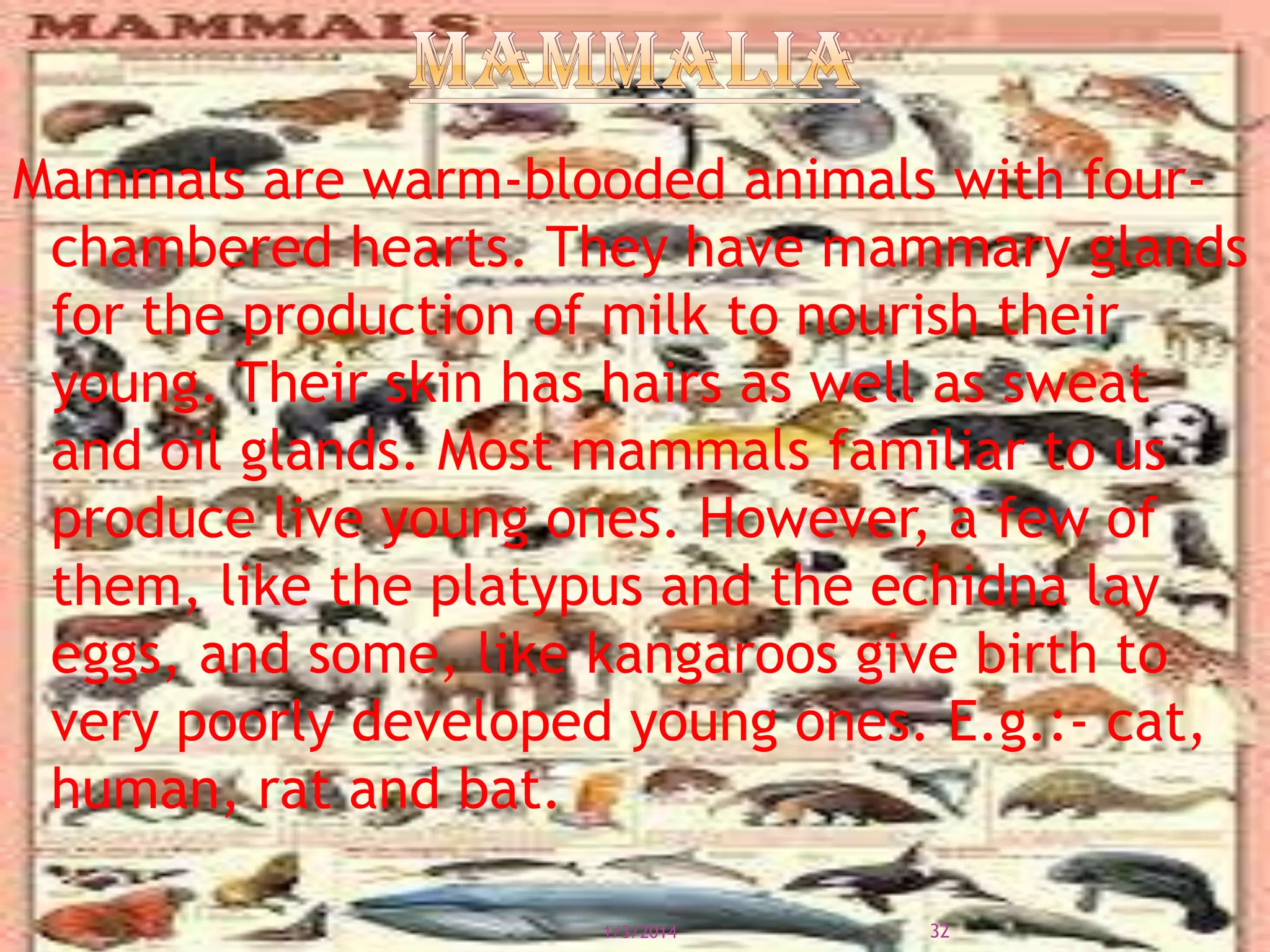This document discusses the classification of living organisms into five kingdoms - Monera, Protista, Fungi, Plantae, and Animalia - based on characteristics like cell structure, nutrition, and body organization. It provides details on the characteristics of each kingdom and examples of organisms that fall within them. The classification system aims to help explore the diversity of life forms on Earth.
































